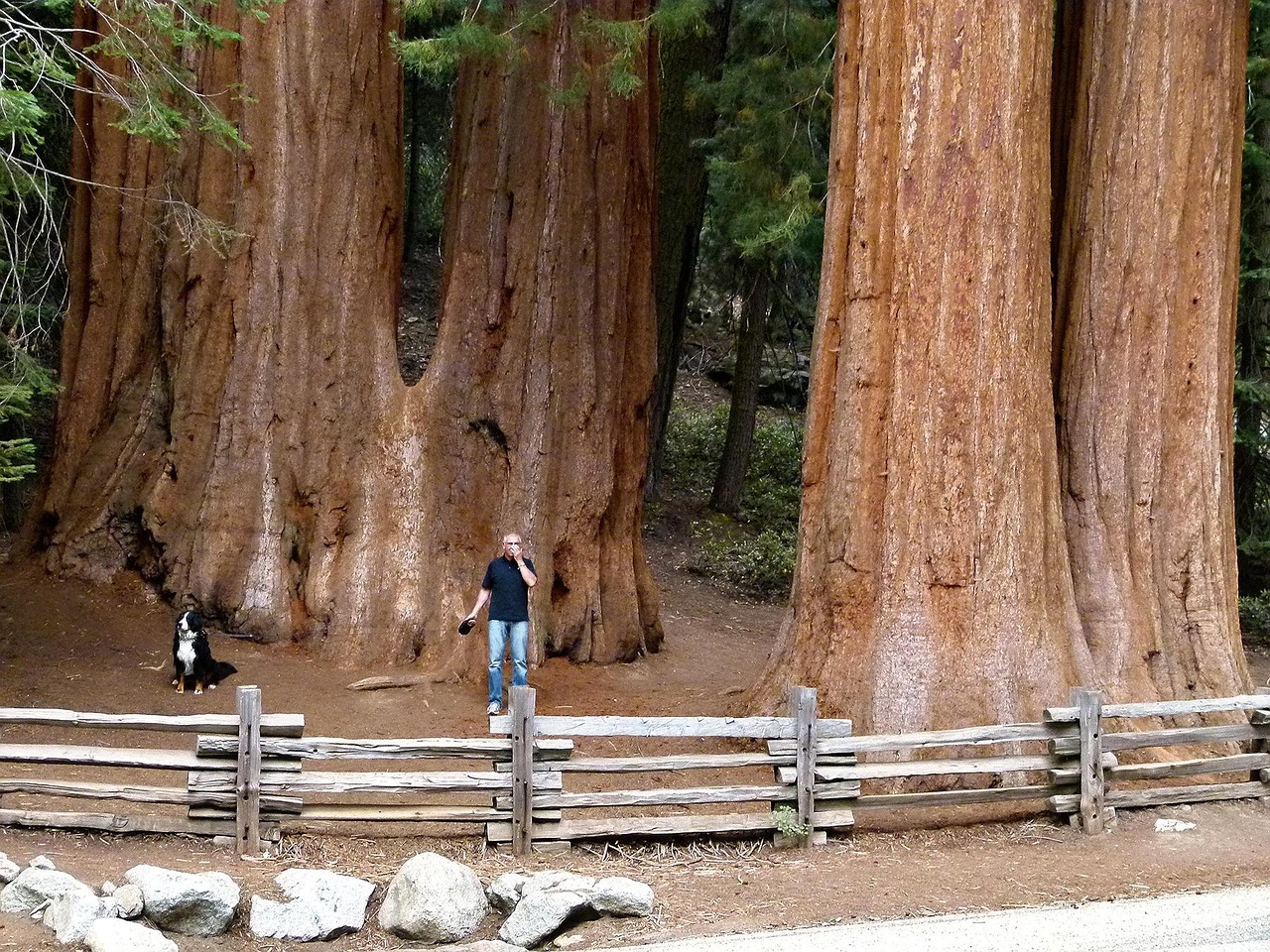Sequoia trees, known for their remarkable height, can grow at an average rate of 2 to 3 feet per year under optimal conditions. Some individuals may even reach heights exceeding 300 feet, making them the tallest trees on Earth.
Understanding Sequoia Trees
Sequoia trees belong to the genus Sequoiadendron and are primarily found in California’s Sierra Nevada mountains. They are renowned for their impressive height, longevity, and massive trunk diameter. These trees can live for over 3,000 years, surviving harsh conditions that many other tree species cannot withstand.

Their growth rate is influenced by various environmental factors, including soil quality, water availability, and climate. In ideal conditions, sequoias can grow rapidly during their early years, establishing themselves as towering giants in the forest. Understanding their growth patterns is essential for conservation efforts and forest management.
Factors Influencing Growth Rate
Several factors contribute to the growth rate of sequoia trees. These include:
- Soil Quality: Rich, well-drained soils promote healthy growth.
- Water Availability: Adequate rainfall or irrigation is crucial for young trees.
- Sunlight: Sequoias thrive in full sunlight, which aids photosynthesis.
- Climate: Mild temperatures and appropriate humidity levels support growth.
- Space: Sufficient room for roots to spread helps trees access nutrients and water.
Growth Stages of Sequoia Trees
The growth of sequoia trees can be divided into several stages:

- Seedling Stage: In this initial stage, seedlings grow slowly. They require optimal conditions to survive and establish roots.
- Juvenile Stage: During this phase, trees experience rapid growth. They can gain several feet in height each year.
- Mature Stage: Once they reach maturity, growth rates may slow. However, they can still add significant height over time.
- Old Age: Even in old age, sequoias remain impressive. They can continue to grow, though at a much slower rate.
Average Growth Rates
The growth rates of sequoias can vary significantly based on their environment. Below is a table summarizing the average growth rates based on different age groups:
| Age Group | Average Height Growth (Feet per Year) |
|---|---|
| Seedling (0-5 years) | 1-2 |
| Juvenile (6-20 years) | 2-3 |
| Mature (21-100 years) | 1-2 |
| Old Age (100+ years) | 0.5-1 |
This table illustrates how sequoia trees experience their most significant growth during their juvenile years. After reaching maturity, growth rates slow, but they can continue to rise impressively in height for centuries.
The Role of Sequoia Trees in Ecosystems
Sequoias play a vital role in their ecosystems. They provide habitat for numerous species and contribute to biodiversity. Their large canopies offer shelter and food for birds and mammals. Additionally, their massive trunks and thick bark make them resistant to fire, allowing them to thrive in fire-prone environments.

Their growth rate also impacts the surrounding environment. As they grow taller and wider, they influence local climate conditions by providing shade and stabilizing soil moisture levels. This interaction with the ecosystem demonstrates the importance of preserving these magnificent trees for future generations.
Factors Affecting Sequoia Growth Rates
The growth rate of sequoia trees is not solely dependent on their genetic makeup. Various environmental and biological factors play a significant role in how quickly these trees can reach their impressive heights. Understanding these factors can help in the conservation and management of sequoia forests.
Climate Conditions
Climate significantly influences the growth rates of sequoias. The ideal climate for these trees includes:

- Mild Temperatures: Sequoias thrive in temperatures ranging from 40°F to 80°F.
- Seasonal Rainfall: Annual precipitation between 30 to 60 inches is optimal for healthy growth.
- Humidity Levels: Higher humidity supports the moisture needs of young trees.
Extreme temperatures, either too hot or too cold, can hinder growth. Additionally, drought conditions can severely impact their health, leading to stunted growth or even tree mortality.
Soil Composition
The type of soil in which sequoias grow is another crucial factor. Ideal soil characteristics include:
- Well-Drained Soil: Sequoias prefer soils that drain well to prevent root rot.
- Nutrient-Rich Content: Soils rich in organic matter promote better growth.
- pH Levels: Slightly acidic to neutral pH levels (between 6 and 7) are preferable.
Poor soil conditions can limit nutrient availability, impacting overall growth rates. Soil testing and amendments may be necessary for cultivation efforts in non-native areas.
Water Availability
Water is a vital resource for sequoia trees. Their growth rate is closely tied to the availability of water throughout the year. Factors to consider include:
- Groundwater Access: Deep root systems allow sequoias to tap into groundwater reserves during dry spells.
- Rainfall Patterns: Consistent rainfall during the growing season promotes rapid growth.
- Irrigation Practices: In managed forests or parks, supplemental irrigation can enhance growth rates.
In years with insufficient rainfall, young trees may struggle to establish themselves, leading to decreased survival rates.
Impact of Competition
In a natural forest setting, sequoia trees face competition from other plant species. This competition can significantly impact their growth rates. Key aspects include:
- Light Competition: Taller trees can overshadow smaller plants, limiting their access to sunlight.
- Nutrient Competition: Other trees and plants may absorb vital nutrients from the soil, making them less available for sequoias.
- Water Competition: In densely populated areas, water resources may become limited due to competing root systems.
While mature sequoias are capable of outgrowing many competitors, young trees may struggle in densely populated environments. Thinning practices in managed forests can help alleviate competition for resources.
Pests and Diseases
Pests and diseases also pose threats to the growth rates of sequoias. Some common issues include:
- Bark Beetles: These pests can bore into the bark, disrupting nutrient flow and weakening trees.
- Fungal Infections: Certain fungi can cause root rot or other diseases that hinder growth.
- Mistletoe Infestation: This parasitic plant can sap nutrients from the host tree, adversely affecting its health.
The management of these threats is essential for maintaining healthy sequoia populations. Integrated pest management strategies can help control infestations while minimizing harm to the environment.
Cultural and Historical Significance
Sequoias hold great cultural and historical significance. Native American tribes have revered these trees for centuries. They are often seen as symbols of strength and endurance. Understanding this cultural context adds another layer to the importance of preserving sequoia forests and ensuring their continued growth.
The historical context of sequoias also informs conservation efforts. Many areas where these trees grow have been designated as protected national parks or reserves. These efforts aim to safeguard sequoias from logging and urban development, ensuring they continue to thrive for generations to come.
Conservation Efforts for Sequoia Trees
As the tallest trees in the world, sequoias are not only a marvel of nature but also vital to our ecosystems. Given their significance, numerous conservation efforts have been implemented to protect these majestic giants. These initiatives aim to address both environmental threats and the needs of the surrounding ecosystems.
Protected Areas and National Parks
Many of the remaining sequoia groves are located within national parks and protected areas. These locations provide a sanctuary for sequoias, preserving their habitat from urban encroachment and logging. Key parks include:
- Sequoia National Park: Established in 1890, this park is home to some of the largest trees on Earth, including the General Sherman Tree.
- Kings Canyon National Park: Adjacent to Sequoia National Park, it features expansive groves of giant sequoias.
- Yosemite National Park: Known for its stunning landscapes, it also has significant populations of sequoias.
Within these parks, strict regulations are enforced to ensure that sequoia habitats remain undisturbed. This includes limiting logging, controlling visitor access, and managing fire risks effectively.
Reforestation Initiatives
Reforestation is another critical aspect of conservation efforts for sequoias. As climate change and other factors continue to threaten their populations, planting new trees is essential. Key components of these initiatives include:
- Seed Collection: Collecting seeds from healthy trees ensures genetic diversity in new plantings.
- Nursery Programs: Establishing nurseries helps grow seedlings in controlled environments before replanting them in the wild.
- Community Involvement: Engaging local communities in planting efforts fosters a sense of stewardship towards these ancient trees.
These efforts not only enhance sequoia populations but also contribute to overall forest resilience against environmental changes.
Fire Management Practices
Fire plays a complex role in the ecology of sequoia forests. While these trees have adapted to withstand natural wildfires, human intervention has altered fire patterns. Therefore, effective fire management practices are vital. These practices include:
- Controlled Burns: Intentionally setting controlled fires can help reduce underbrush that competes with young sequoias for nutrients and water.
- Firebreaks: Creating firebreaks helps prevent wildfires from spreading into vulnerable areas.
- Monitoring Fire Conditions: Keeping track of weather conditions and soil moisture can help predict potential fire risks.
By incorporating fire into forest management strategies, conservationists can help maintain a balanced ecosystem that supports the growth of sequoias while mitigating wildfire risks.
The Role of Research and Education
Research plays a pivotal role in understanding the biology and ecology of sequoias. Scientists study various aspects of these trees to inform conservation strategies. Key areas of research include:
- Growth Patterns: Understanding how sequoias grow under different environmental conditions helps identify optimal habitats.
- Pest Resistance: Studying how sequoias respond to pests can lead to better management practices.
- Ecosystem Interactions: Researching how sequoias interact with other species helps maintain biodiversity.
Moreover, education initiatives aim to raise awareness about the importance of conserving sequoia trees. Programs may include:
- School Outreach: Educating students about the significance of sequoias and their ecosystems fosters a new generation of conservationists.
- Visitor Programs: National parks often offer guided tours highlighting the ecological importance of sequoias and their habitat.
- Workshops and Events: Hosting events that encourage community involvement in conservation efforts strengthens local support.
The Future of Sequoia Trees
The future of sequoia trees depends on continued conservation efforts and public awareness. As climate change poses new challenges, adapting management practices will be crucial. Strategies may involve enhancing genetic diversity, mitigating pest impacts, and promoting sustainable tourism practices.
The collaborative efforts between government agencies, non-profit organizations, and local communities will be vital in ensuring that these ancient giants continue to thrive. With proper attention and action, sequoia forests can remain a cornerstone of biodiversity and natural beauty for generations to come.
Challenges Facing Sequoia Trees
Despite the efforts to conserve sequoia trees, several challenges continue to threaten their survival. Addressing these challenges is essential for the long-term health of sequoia forests. Some of the prominent issues include:
- Climate Change: Rising temperatures and changing precipitation patterns can affect the growth rates and survival of sequoias. Increased frequency of droughts can stress young trees, making them susceptible to diseases and pests.
- Urban Development: Expansion of urban areas often encroaches on sequoia habitats. This development can fragment populations and reduce available habitats, leading to declines in tree health.
- Invasive Species: Non-native plants and animals can disrupt local ecosystems, competing with sequoias for resources. These invasive species can alter the natural dynamics of the forest.
- Wildfires: While sequoias are adapted to withstand fire, increasingly intense wildfires driven by climate change can threaten their survival. Fire management practices must evolve to address these new risks.
Addressing these challenges requires a multi-faceted approach. Conservationists must work collaboratively with scientists, policymakers, and local communities to develop and implement effective strategies.
The Importance of Biodiversity
The preservation of sequoia trees is not just about saving one species; it is about maintaining the biodiversity of entire ecosystems. Sequoias support a wide range of flora and fauna, contributing to the overall health of their habitats. Biodiversity offers numerous benefits, including:
- Ecological Stability: Diverse ecosystems are more resilient to environmental changes and disturbances, making them better equipped to adapt over time.
- Economic Value: Healthy forests provide resources such as timber, recreation opportunities, and tourism revenue, benefiting local economies.
- Cultural Significance: Many communities have deep cultural ties to sequoia forests, relying on them for spiritual and recreational activities.
By protecting sequoias and their ecosystems, we ensure the survival of countless species and preserve the intricate web of life that depends on these majestic trees.
Community Engagement and Awareness
Community involvement is critical in the conservation of sequoia trees. Engaging local populations fosters a sense of ownership and responsibility towards preserving these natural treasures. Some key strategies for promoting community engagement include:
- Educational Programs: Schools and local organizations can create programs focused on the importance of sequoias and forest ecosystems.
- Volunteer Opportunities: Organizing tree-planting events or forest clean-up days allows community members to actively participate in conservation efforts.
- Partnerships with Local Businesses: Collaborating with businesses can help promote conservation initiatives and raise funds for projects.
When communities are informed and involved, they are more likely to support conservation efforts and advocate for policies that protect sequoia forests.
Conclusion
The growth rates of sequoia trees make them remarkable examples of nature’s resilience and grandeur. However, their survival depends on a comprehensive understanding of the factors influencing their growth and the challenges they face. Conservation efforts are vital in maintaining these majestic trees and the ecosystems they support.
As we move forward, it is imperative to focus on adaptive management practices that address the impacts of climate change and other threats. By fostering community engagement, promoting biodiversity, and implementing effective conservation strategies, we can ensure that future generations will continue to marvel at the beauty and majesty of sequoia trees.
Ultimately, the fate of these ancient giants lies in our hands. Through collective action and a commitment to preserving our natural heritage, we can protect sequoias and their vital role in sustaining healthy ecosystems for years to come.
